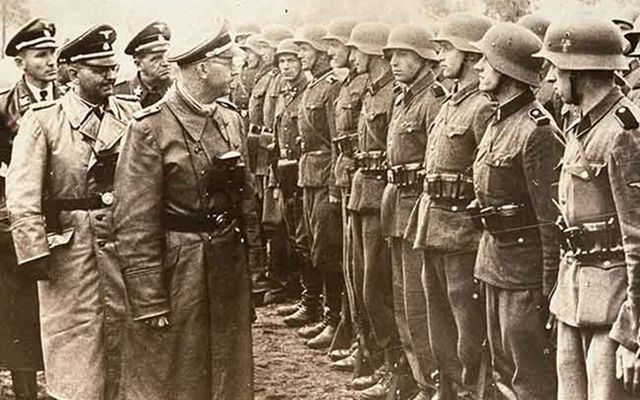In 1940, German war chiefs were busy devising Unternehmen Grün, or Operation Green, Nazi Germany’s planned invasion of Ireland. The plans only came to light in recent years.
Dublin was earmarked by the Nazis as one of six regional administrative centers for Britain and Ireland right after Dunkirk when an Allied collapse seemed imminent.
Had the occupation taken place, the Germans thought it crucial that their advancing units reach Ireland as soon as possible after the initial invasion.
The plan would have seen the fourth and seventh infantry divisions of the Germany Army being deployed to Ireland. The German 4th army corps, in particular, had a brutal reputation in battle and inflicted many civilian casualties as they secured the Polish corridor to Warsaw during the invasion of Poland in 1939.
Their advance, had the fourth and seventh been deployed to Ireland, would have been rapid - up to 100km a day - and their brutality would have been beyond doubt.
Fifty thousand troops in total were allocated for the Irish invasion with an initial batch of 4,000 crack engineers, motorized infantry, commando, and panzer units to reach the Irish shore after having launched from France.
The operatives were initially to land on Ireland’s South-East coast where they expected to be met with only token resistance, and then to aerially bomb targets throughout the Irish Free State as it was then known.
After this initial landing and advancement phase, ground troops of the 4th and 7th army corps would have begun so-called “probing attacks” on the Irish Army based in Cork and Clonmel, followed by a push through Laois-Offaly towards the Army’s Curragh Camp base in Co. Kildare.
Some units would have reached the outskirts of Dublin just 48 hours after having landed in the South-East, such would have been the pace of their progress.
The Nazi politburo in Dublin was to have far-reaching executive powers and would have had instructions to dismantle, and if necessary, liquidate, any of Ireland’s remaining indigenous political apparatus, intellectual leadership, and any non-Aryan social institutions. The GAA would have been closed and Irish Jews would have been murdered en masse.
Ireland would have been ruthlessly subject to German martial law, with curfews also being imposed on the local population, as well as plans to commandeer resources from locals. To this end, an annex was added to the plan listing all petrol stations and garages in Munster and the Midlands. Nothing wasn’t planned for.
Livestock, food, fuel, and forced labor would all have been used by the Germans in their advance northwards, which would have pitted them squarely against the civilian population.

Love Irish history? Share your favorite stories with other history buffs in the IrishCentral History Facebook group.
Ireland’s army at the time of 7,600 regulars and 11,000 reserves would have been completely unable to handle the onslaught from the invading force. The army was also incapable of mounting large-scale maneuvers and was poorly armed. Many companies even traveled by bicycle!
When Winston Churchill got wind of the German plans, he drafted detailed plans for a counter-attack to be launched from Northern Ireland. The plan, codenamed Plan W, envisaged the Irish and British armies fighting side by side to repel the intrusive German forces.
Ireland’s neutrality was respected and they emerged largely unscathed from the war, but had the invasion taken place, there could well have been large-scale casualties.
* Originally published August 2013. Updated in November 2022.




Comments